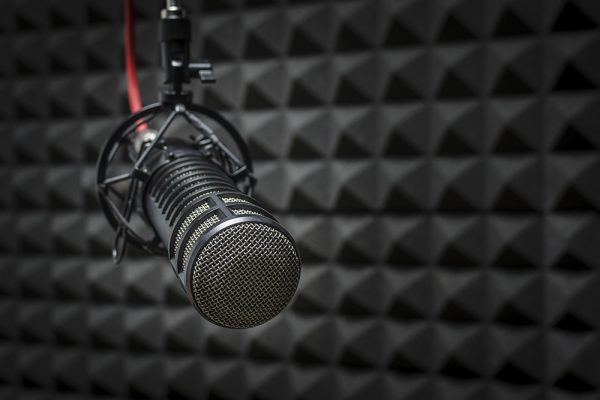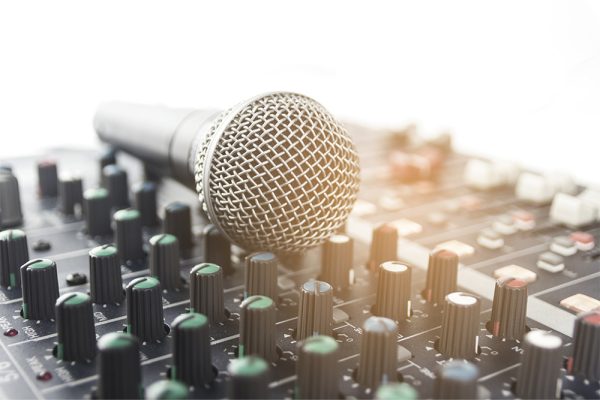At Capital Captions, we truly care about the deaf and hard of hearing community. Our goal is always optimising video accessibility through high quality captioning, transcription and subtitling services.
For people with hearing loss, there are many life situations where communication and access to audio information is compromised. From noisy bars or cafes, busy train stations, echoing halls or even during windy weather, it can be hard to hear. However, nothing can be quite as frustrating as sitting in your living room, trying to watch the television but struggling to hear what on earth is being said.
Especially for modern television programmes, there is an ever increasing reliance on music and over-amplification of sound effects, as well as other factors that can make it really hard to distinguish speech. For those deaf and hard of hearing viewers who are struggling, here’s our top tips to make life easier!
-
Hearing Loops and Radio Aids
Hearing loops and Telecoil settings on hearing aids can be invaluable to the deaf community in a wide number of situations. The benefit of using a loop system whilst watching television or videos online is enormous.
An induction hearing loop can be set up in your own living room, and attached directly into your television. In addition transmitters such as TV Ears can be purchased which send sound directly from the television into your hearing aids or cochlear implants (model dependent).
This means you can increase the volume and effectively eliminate some of the background noise distorting the TV sound. It also helps to prevent cranking up the audio, protecting the ears and ensuring the comfort of all the other viewers around you.
-
Audio Setting Modifications
Modern televisions have numerous audio settings. This, coupled with different programme makers’ recording practices, can mean there are stark differences between the television sound quality. Whilst it’s tempting to turn up the volume for better access to speech, there are more than a few reasons not to. Firstly, turning up the volume is impractical and can cause disturbance to others. Second, and even more importantly, increasing the volume can potentially damage your hearing further. Before moving onto other options, consider first trying to optimise your audio output settings.
Here are some basic tips:
- If surround or virtual sound is an option, turn it off.
- Turn bass settings to low.
- Turn treble settings to high.
- Avoid fancy sound modes at all costs. If in doubt, always choose ‘standard’ or ‘default’ mode.
-
Subtitling and Closed Captioning
Closed captions and subtitles are often the first port of call for viewers with hearing loss. Video accessibility for deaf and hard of hearing audiences is crucial for viewers, and closed captioning is legally regulated by Ofcom.
Closed captioning and subtitling services can vary widely between viewing platforms (BBC, Netflix, YouTube, etc) as well as between devices. For instance, while closed captioning is available on broadcast television as per legal requirements, catch-up and on demand services are often not closed captioned to the same standards.
For many companies working with non-broadcast video, subtitles are the most popular option in terms of on-screen text. However, closed captioning is far more beneficial for hard of hearing audiences. Closed captions include not only speech but other information that is hard to gain access to without full access to sound, such as vocalisations, speaker identifications and sound effects.
Currently in the UK, laws are being put in place to ensure closed captioning for VoD services. However, these may take some time to filter through as TV service and platform providers need to work together. Many companies, such as Capital Captions Subtitling Services are advocating online for increased use of subtitles by video service providers, especially following on from the success of Action on Hearing Loss’ Subtitle It! campaign.
-
Practical Home Solutions
Taking steps in your home to ensure the best access to TV sound can make the world of difference.
In terms of sound reverberation and echo, it’s good practice to insulate as much as possible. This means using carpets, cushions, curtains and other soft furnishings to ensure the best sound quality.
In addition, consider the placement of your television and speakers to promote video accessibility. Many modern televisions have speakers towards the back. This means sound is transmitted away from the viewer, making it harder to hear. Consider external speakers and aim them strategically towards you. If your family is both deaf and hearing, consider making your ‘spot’ the one that’s nearest to the speaker.
That’s our top tips for deaf and hard of hearing viewers to gain maximum access to television sound. At Capital Captions, we care deeply about access to video services, as well as other issues faced by the deaf community. Alongside our subtitling business, we run MyLittleEars.com, a website providing information and hearing products for children with hearing loss, dedicated to our little boy, Brandon.
We hope these tips will help you experience a better viewing experience in the future.











Comments are closed.